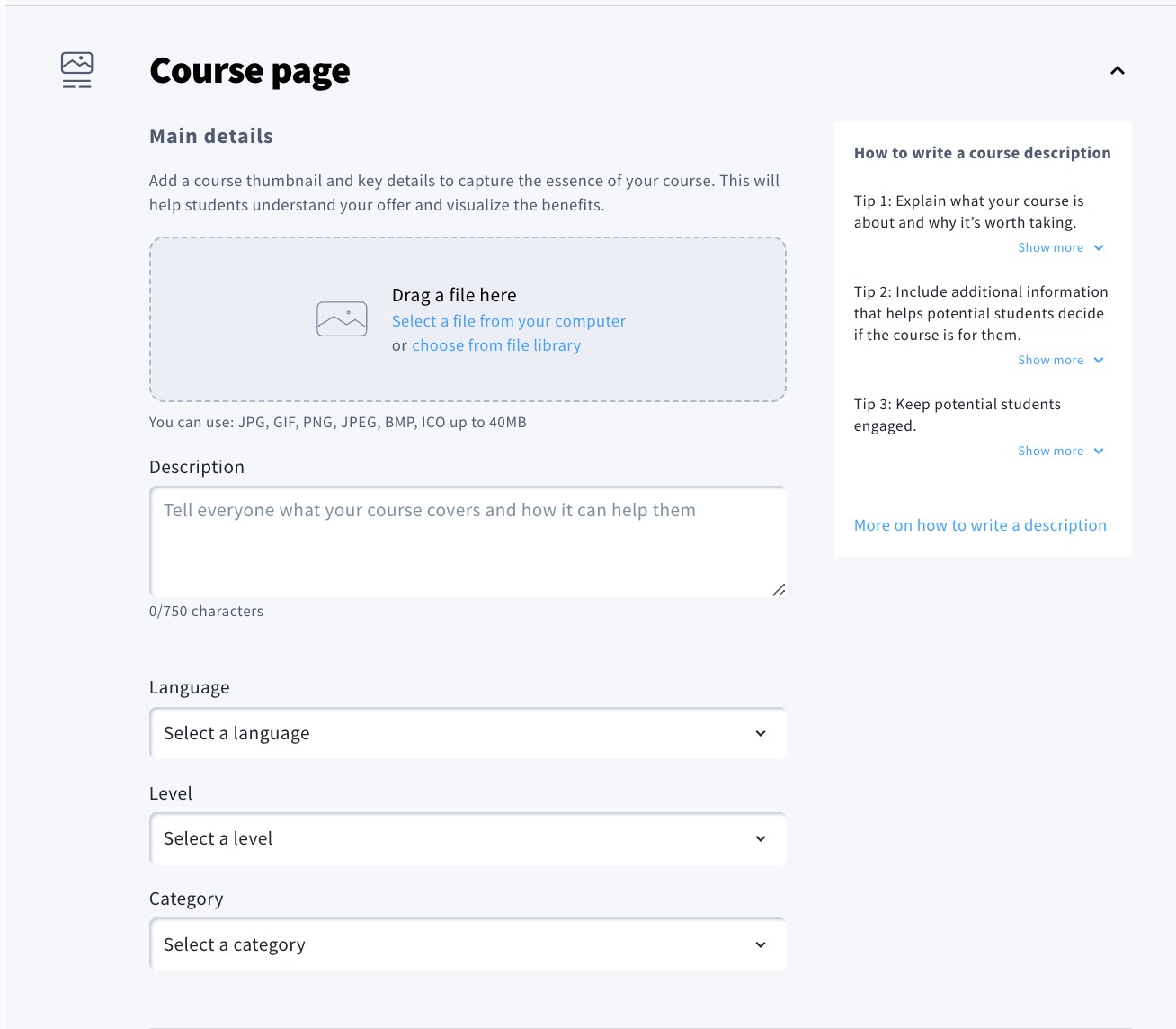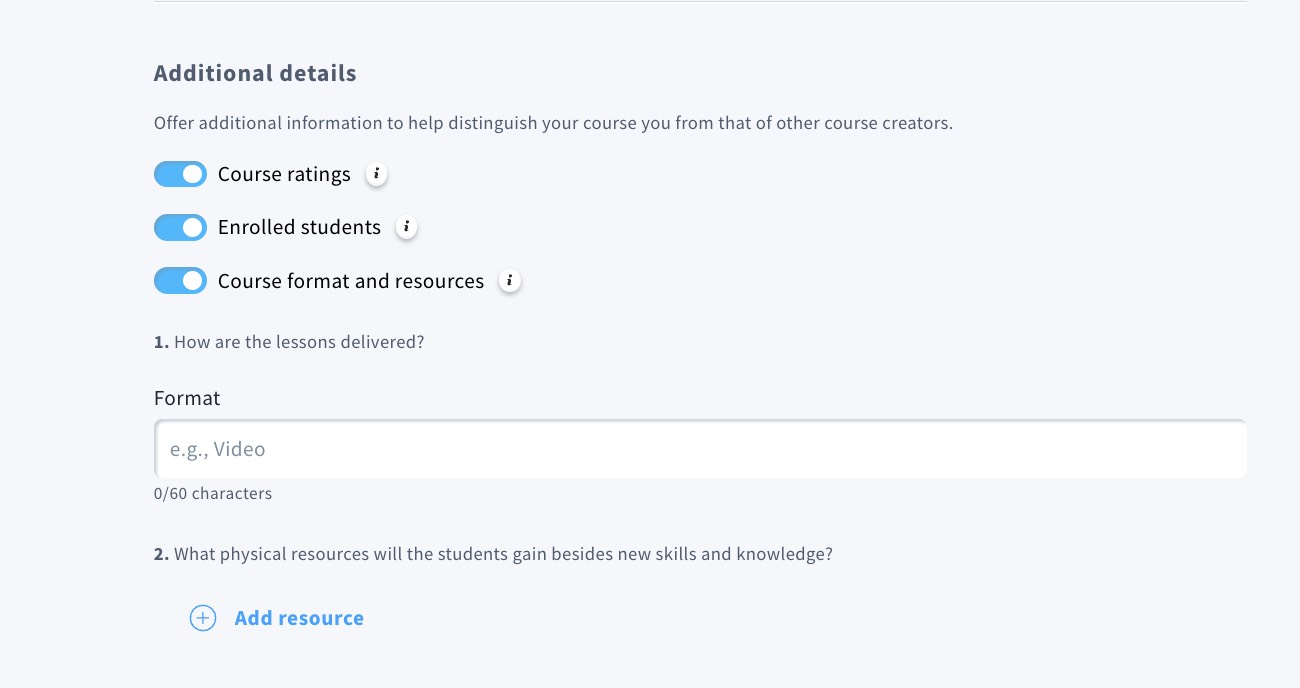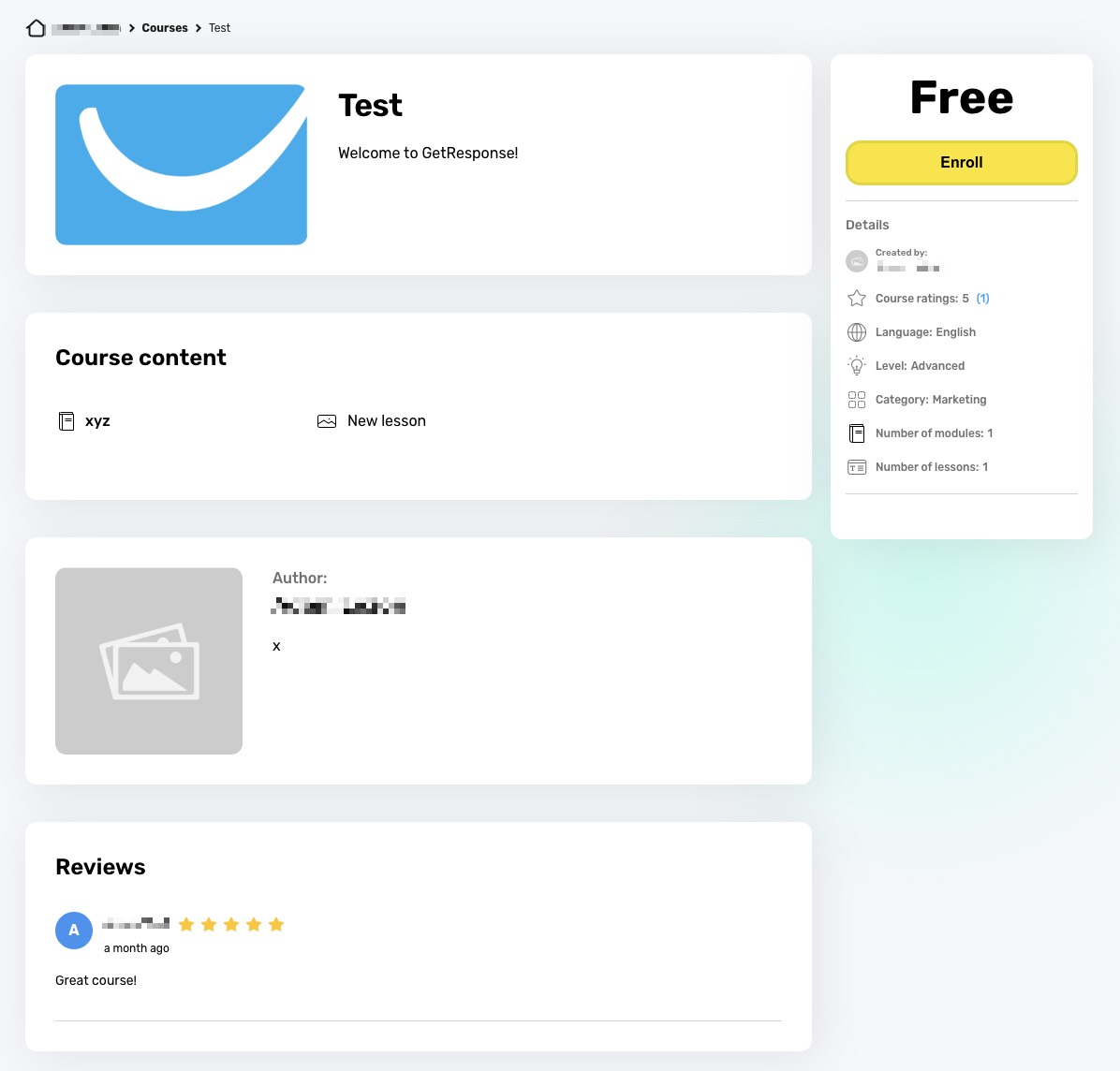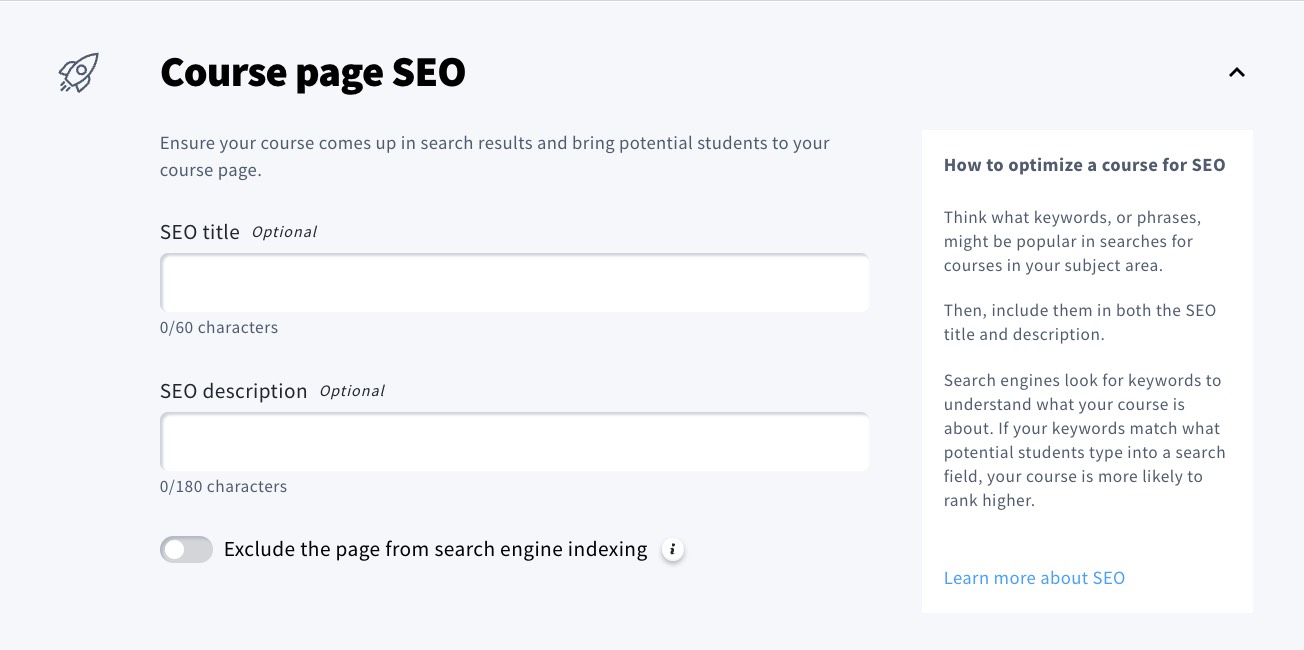How to create and optimize my course page?
A course page can be a great tool to help students understand your offer and visualize the benefits of joining your course. You can also optimize the SEO
The course page editor can be found in course settings. Navigate to Tools > Courses.

Press on Create Course (or if you have an existing course, scroll on the action menu) > Settings.

How to create the course page
To create a course page, you should scroll down, find the Course page section and expand it.

- In the image field, you can insert a course page thumbnail. It will help you attract students to the course page. You can use JPG, GIF, PNG, JPEG, BMP, and ICO file formats, and the file size should not be larger than 40 MB.
- In the description, you can describe your course and share relevant information with your future students. Below are a few tips that should help you prepare the content of the description:
Explain what your course is about and why it’s worth taking
- Summarize what your course covers.
- State clear goals and emphasize the benefits.
- Optionally, explain what distinguishes your course from other courses on the same topic.
Include information that will help students decide if the course is right for them
- Specify the format and level.
- State any prerequisites.
- Specify if there’s an assessment.
Keep potential students engaged
- Address them directly. Say “you” instead of “students” or “participants”.
- Write in the present tense and in the active voice.
- Include everyday terms they understand. Use industry-approved technical terms and acronyms when appropriate.
- In the language drop-down menu, you can select the language used in your course.
- The level field will indicate what degree of expertise is required to join the course. The current options are: beginner, intermediate, and advanced.
- You can also specify the category field. We recommend selecting the option that is most related to your course agenda. The currently available categories are:
- Personal development
- Marketing
- Business
- Finance
- Design
- Health
- Arts
- IT
- Education
- Other
Below the course page’s main details, you can also toggle additional details to match your preferences.

- Course ratings can be turned on to provide social proof of your course’s value. The number displayed on the course page is the average course rating from all reviews.
- If you decide to turn on the Enrolled students toggle, it will display the number of contacts participating in the course. This number can help you showcase the popularity of the course.
- You can show the Course format and resources included to help students visualize how the course can fit into their schedule and evaluate its added value.
If you decide to turn on this toggle, you will be able to provide information on the format in which the course is delivered and specify what physical resources the students will gain besides new skills and knowledge.
Below you will find an example of how a published course page could look like:

Where to find my course page link
The URL

How to optimize the course page SEO settings
It is possible to configure the SEO settings by expanding the Course page SEO section.

You will be able to insert a SEO title (up to 60 characters) and a SEO description (up to 180 characters). There is also a toggle, which, when turned on will exclude the page from search engine
To best configure your SEO settings, you should think about what keywords, or phrases, might be popular in searches for courses in your subject area. Here you can learn more about SEO best practices.
If you wish to learn more about other course settings, please refer to the email subscriptions and pricing articles.




